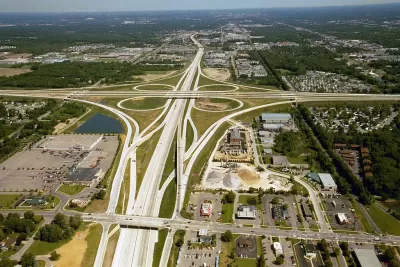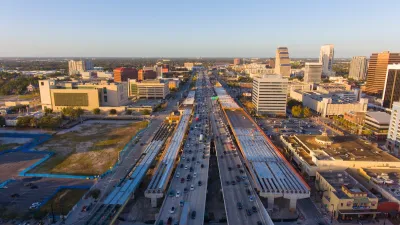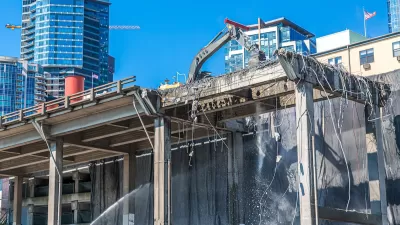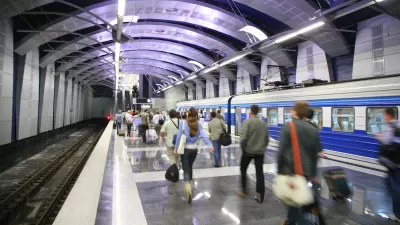Charles Marohn turns a critical eye toward the inertia of federal transportation policy and the shortsightedness of its most treasured investment. Since America seems to be stuck with a federal transportation bill, he suggests ways to make it work.

Arguably the greatest feat of civil engineering of the 20th century, the Interstate Highway System (along with the remainder of the nation's auto infrastructure) stands sacrosanct on the congressional agenda for federal transportation policy. With each passing year, Marohn writes, "nearly every elected official seems to agree that there is value in new highways."
But when the federal government channels money into highway construction projects, is it biting off more than local jurisdictions can chew? According to Marohn, "there is a one-way (emanating from Washington DC) tacit understanding that maintenance costs are a local concern." The consequence is that while aggressive expansion of the highway system leads to short-term economic growth, it becomes a white elephant for cities stuck with the maintenance bill decades down the line.
"While Our Federal Government is much like the company that boosts share prices in the current quarter so that the CEO can retire, cash out his stock options and take some cushy spot on a board of directors, only to have the entire thing explode in the next quarter. Did the CEO know the thing was going down? Maybe or maybe not, but it is far more likely that he was so focused on the current quarter that he didn't even bother to contemplate it."
Another complication is that projects of great local importance succumb to the requirements attached to federal assistance – requirements that are often at odds with cost-concsiousness and community interest. What communities need is fewer, better-maintained road miles, and a stronger rail system for both passenger and freight travel.
"So," Marohn charges, "all things being equal, I would rather not have a federal transportation bill. Ask yourself why we have one in the first place. It is pure momentum from the early highway days. Our bureaucrats sat down in the 1930's and, similar to Soviet central plans of the same era, designed a national highway system. That this system has been built, expanded, and expanded yet further beyond anything ever imagined (or anything with a financial return) is instructive. We have a transportation bill this year because we had one last year, not because we are worried that Iowa and Minnesota will fail to agree on where Intersate 35 crosses their border."
FULL STORY: What is the federal role?

Alabama: Trump Terminates Settlements for Black Communities Harmed By Raw Sewage
Trump deemed the landmark civil rights agreement “illegal DEI and environmental justice policy.”

Planetizen Federal Action Tracker
A weekly monitor of how Trump’s orders and actions are impacting planners and planning in America.

Why Should We Subsidize Public Transportation?
Many public transit agencies face financial stress due to rising costs, declining fare revenue, and declining subsidies. Transit advocates must provide a strong business case for increasing public transit funding.

Understanding Road Diets
An explainer from Momentum highlights the advantages of reducing vehicle lanes in favor of more bike, transit, and pedestrian infrastructure.

New California Law Regulates Warehouse Pollution
A new law tightens building and emissions regulations for large distribution warehouses to mitigate air pollution and traffic in surrounding communities.

Phoenix Announces Opening Date for Light Rail Extension
The South Central extension will connect South Phoenix to downtown and other major hubs starting on June 7.
Urban Design for Planners 1: Software Tools
This six-course series explores essential urban design concepts using open source software and equips planners with the tools they need to participate fully in the urban design process.
Planning for Universal Design
Learn the tools for implementing Universal Design in planning regulations.
Caltrans
Smith Gee Studio
Institute for Housing and Urban Development Studies (IHS)
City of Grandview
Harvard GSD Executive Education
Toledo-Lucas County Plan Commissions
Salt Lake City
NYU Wagner Graduate School of Public Service





























